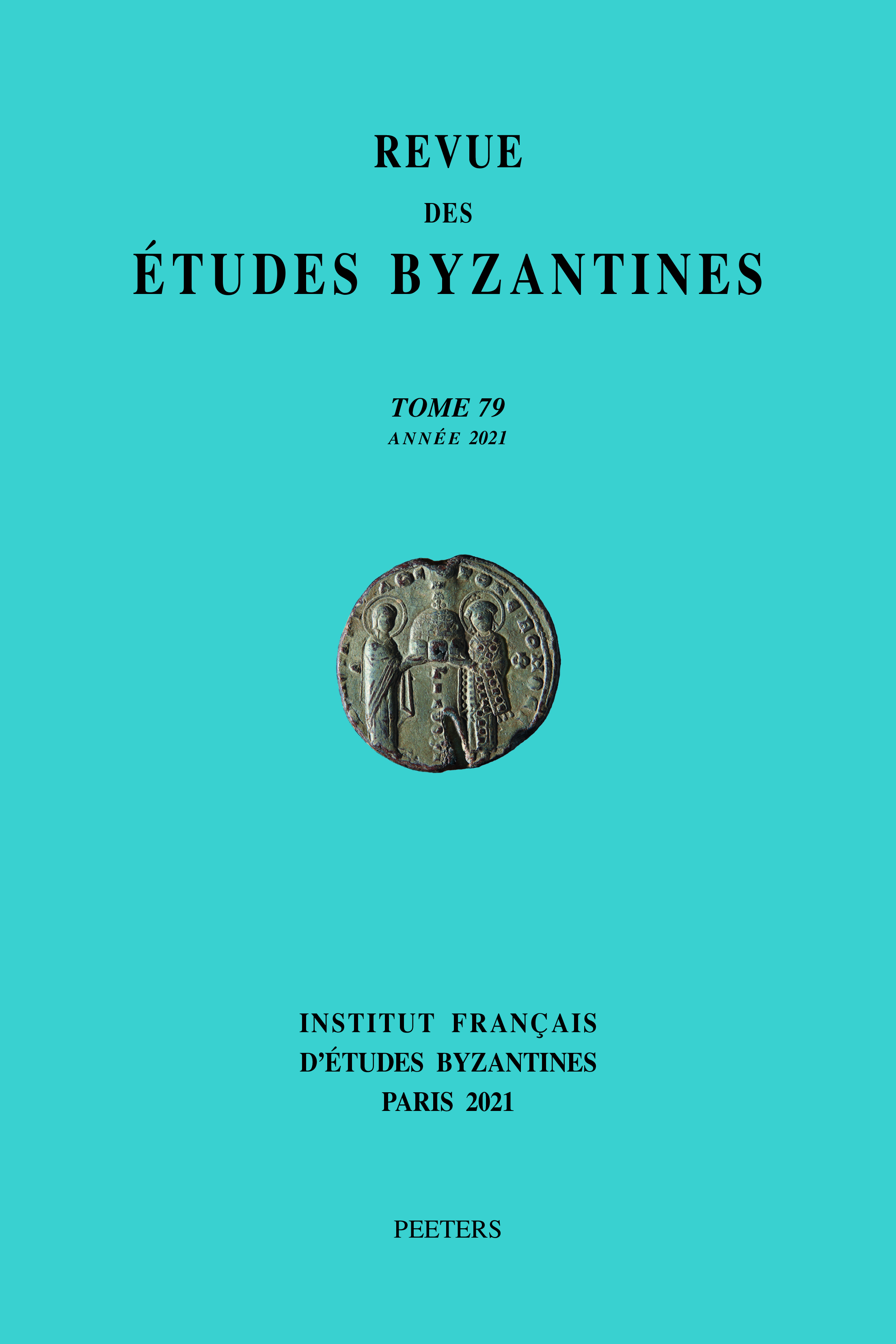 previous article in this issue previous article in this issue | next article in this issue  |

Preview first page |
Document Details : Title: The Wells in the Buttresses of the West Facade of Hagia Sophia, Constantinople Subtitle: The Date and Context Author(s): TETERIATNIKOV, Natalia B. Journal: Revue des Études Byzantines Volume: 76 Date: 2018 Pages: 331-347 DOI: 10.2143/REB.76.0.3285526 Abstract : This article draws attention to the presence of two wells within the fabric of the first and fourth buttresses of the west façade of Hagia Sophia, Constantinople. It discusses their setting within the buttresses, their source of water, the time of their construction, their function and their role in the sacred space of Hagia Sophia’s exterior. It demonstrates that the construction of the buttresses together with the two wells in the west façade coincided with the restoration of Hagia Sophia in either the ninth or tenth century. Both wells in the buttresses of the courtyard were likely used by the faithful for drawing holy water and taking it to their home, especially during the feast of the Epiphany and other holy days. These wells belong to the time when the congregation had nearly doubled since Hagia Sophia was built, and the fountain at the center of the courtyard was not large enough to supply water especially for feast days like the Epiphany when, in addition to parishioners, the imperial court participated. The Hagia Sophia’s wells in the buttresses of the west façade present one of the earliest surviving examples in Byzantine architecture for distribution of holy water from a church exterior. Cet article attire l’attention sur la présence de deux puits dans la structure du second et du quatrième contreforts de la façade ouest de Sainte-Sophie de Constantinople. Il discute leur emplacement au sein des contreforts, leur source d’eau, l’époque de leur construction, leur fonction et leur rôle dans l’espace sacré à l’extérieur de Sainte-Sophie. Il démontre que la construction des contreforts avec les deux puits dans la façade ouest a coïncidé avec la restauration de Sainte-Sophie au neuvième ou dixième siècle. Les deux puits des contreforts de la cour étaient vraisemblablement utilisés par les fidèles pour puiser de l’eau bénite et l’emporter chez eux, lors de la fête de l’Épiphanie et lors d’autres jours saints. Ces puits datent d’une époque où les fidèles avaient pratiquement doublé en nombre depuis la construction de Sainte-Sophie et où la fontaine au centre de la cour n’était plus suffisamment grande pour fournir de l’eau, notamment à l’Épiphanie, fête à laquelle, en plus des fidèles, prenait part la cour impériale. Les puits dans les contreforts de la façade ouest de Sainte-Sophie présentent l’un des exemples les plus anciens dans l’architecture byzantine de distribution d’eau bénite depuis l’extérieur d’une l’église. |
|


